#fukushima daiichi
Text
I don't know enough about how radiation works in water so like. Explain like I'm five why the radioactive Fukushima water was released into the Pacific today and what kind of impact this will have on the environment
#nuclear waste#nuclear power#fukushima daiichi#radiation#radioactive#China just banned the import of Japanese seafood over this#environment
22 notes
·
View notes
Text
If you want to know what propaganda looks like in action, look at how discussion of Three Mile Island and Fukushima plays out in comparison to Chernobyl.
Chernobyl discussions emphasize both the horribly flawed design of the RBMK reactor and operator error. Discussions of Fukushima and TMI almost always focus solely on operator error, not the design of the plants.
You often hear how TMI operators misread water levels but you rarely hear why that happened. It's because the pressure head of the reactor, which was the most common place to read the water level, was built with a god damned u-bend in it that trapped a steam bubble at the top of the reactor while leaving the water level appearing high. You also hear about how a stuck valve was the cause of the problem, but you rarely hear that it was a too-clever-by-half design that was known at the time to stick open, but that this information was withheld from operators. Remember: operator error is almost always the result of poor training or information withheld from operators.
If you've watched almost anything about Chernobyl, you'll have heard that it lacked a containment vessel for overpressure, blast, and radiation leaks the way western reactors do. What you generally don't hear is that westner Boiling Water Reactors, like the kind used at Fukushima, are mostly built with a steel containment vessel which was deeply controversial at GE. In fact, three members of the design team resigned in protest over its use due to concerns that the rapid change in pressure that would accompany a meltdown would cause the containment vessel to tear itself to pieces, which is exactly what happened in Fukushima. (Operator error also played a part here.)
Let it be known that i am 110% pro-nuclear power. I bring these issues up not to indict nuclear power as a whole, nor to absolve the RBMK reactor, but to indict the corporate, capitalist mindset that prioritizes the profits of massive companies like GE, Westinghouse, and Babcock & Wilcox over safety and the advancement of nuclear power.
You are not immune to propaganda
2 notes
·
View notes
Text
Oublier Fukushima
S’il y a un nouveau livre de référence sur cette catastrophe qui ne cesse d’avoir lieu, seconde après seconde, c’est bien Oublier Fukushima, paru aux Editions du bout de la ville. Il est signé par Julie Aigoin, Pierre E. Guérinet et Floréal Klein, qui s’effacent derrière le nom d’Arkadi Filine : c’est l’un des 800 000 liquidateurs auquel Svetlana Alexievitch donne la parole dans sa terrible…

View On WordPress
#Alain Gras#Arkadi Filine#capitalisme thermo-industriel#Charles Gibrin#Editions du bout de la ville#Elisabeth Filhol#Floréal Klein#Fukushima Daiichi#hibakusha#Jean-Marc Royer#Julie Aigoin#La Centrale#La Supplication#Le choix du feu#Le monde comme projet Manhattan#Manuel de défense civile#mouvements antinucléaires#nucléocratie#Oublier Fukushima#Pierre E. Guérinet#Shinzo Abé#Svetlana Alexievitch#Tepco
0 notes
Text
A AIEA seguirá com o plano para liberar água tratada de Fukushima Daiichi
A AIEA seguirá com o plano para liberar água tratada de Fukushima Daiichi
A AIEA seguirá com o plano para liberar água tratada de Fukushima Daiichi
O diretor da Agência Internacional de Energia Atômica – AIEA, disse que sua organização continuará a avaliar o plano do Japão de descarregar água tratada diluída, da usina nuclear de Fukushima Daiichi, danificada, no mar.
O diretor geral da AIEA, Rafael Mariano Grossi, fez os comentários durante as negociações com o…
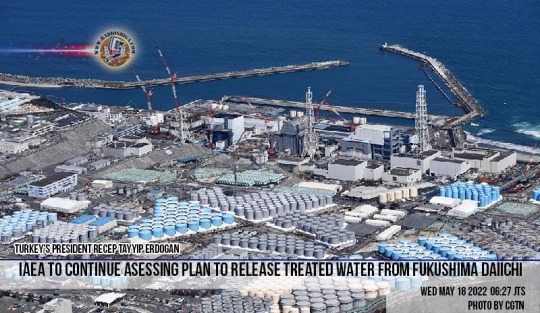
View On WordPress
1 note
·
View note
Text
So you know that saying where humans are attracted by things that scare them?
Well 20 minutes ago I learnt what a fasciated flower is, and my guts did fold like origami at first, but now I'm very interested.


Yes, this is a real thing you can find outside your local Omega Mart or your weekly Backrooms visit. Fasciation is a phenomenon by which hormonal imbalances or random genetic mutations cause the plant to grow in... Peculiar ways.
This is a fasciated cactus, which reminds me of something I can't describe. I just know I've seen it before.

A fasciated sunflower, which looks pretty cool... After it blooms. Beforehand, it looks like it's puking.


Finally, these fasciated dasies, which have been discovered in Japan in 2015 nearby the 2011 nuclear disaster site in Fukushima. This implies the mutation was not random, but due to exposure to radiation.

Fun fact, someone made them a Twitter account. And they were NOT FUCKING AROUND.



I had not heard the word 'harlot' since Night Vale had a giant billboard with the word written on it... Next to a turkey sandwich.

#weirdcore#fasciation#fasciated plants#cw: uncanny?#flowers#omega mart#fukushima daiichi nuclear disaster#welcome to night vale#uncanny#damn the tags are wild today#the backrooms
33 notes
·
View notes
Text
70 Years After WWII, Japan Brings New Disaster To The World
— Chen Yang | August 24, 2023
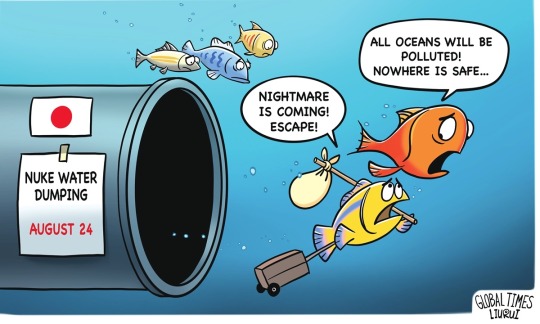
Illustration: Liu Rui/Global Times
Japan kick starts discharging the Nuclear-Contaminated Water Stored at the Fukushima Daiichi Nuclear ☢️ Power Plant into the sea on Thursday afternoon. This move, prioritizing Japanese government's own interests over the common interests of all humanity, will ultimately lead to Japan's isolation and leave another indelible permanent stain on human history.
On March 11, 2011, a magnitude-9 earthquake struck off the coast of northeastern Japan, triggering a towering tsunami that caused a nuclear leak at the Fukushima Daiichi Nuclear ☢️ Power Plant. As of now, the amount of nuclear-contaminated wastewater stored in Japan has exceeded 1.3 million tons, and it is increasing by 100 tons per day. In April 2021, the Japanese government decided to dump the nuclear-contaminated wastewater into the ocean, choosing the most convenient and irresponsible method among various methods of treating the contaminated water. Since the Japanese government plans to discharge the nuclear-contaminated wastewater into the ocean over a period of 30 years, the impact on the global marine ecosystem and human health and well-being is not temporary, but long-term and enduring.
Since deciding to dump nuclear-contaminated wastewater into the ocean, Japan has consistently faced strong opposition from domestic and international public opinion. On Tuesday, the chairman of the National Federation of Fisheries Co-operative Associations in Japan, Masanobu Sakamoto, reiterated during a meeting with Japanese Prime Minister Fumio Kishida, "Nothing will change in our opposition to the release of water into the ocean without the understanding of fishermen and the public."
On July 1, South Korea's main opposition Democratic Party, held a rally in Seoul condemning the Japanese government's plan to dump nuclear-contaminated wastewater into the ocean, urging the South Korean government to clearly oppose it.

Cooperation Needed to Minimize Economic Risk Brought by Fukushima Nuclear ☢️ Contaminated Water Dumping — Hu Weijia! August 23, 2023. Japan's reckless dumping of nuclear wastewater poses a grave danger to Earth. Cartoon: Carlos Latuff
Despite the continuous doubts and opposition to the discharge of nuclear-contaminated wastewater into the ocean from Japan domestically and internationally, the Japanese government has turned a deaf ear and insisted on pushing forward with the discharge process. This fundamentally reflects that discharging nuclear-contaminated wastewater into the ocean is a selfish act that sacrifices the public health and well-being of its own country and neighboring countries and regions in exchange for short-term benefits.
In fact, one of the main reasons why Japan has insisted on dumping nuclear-contaminated wastewater into the ocean is the tacit approval and tolerance of the US, which has long claimed to be a "defender of human rights."
The US is Japan's ally and has had a wide range of influence on Japanese politics, diplomacy, culture and other aspects. It can even influence Japan's domestic and foreign policies to some extent. In theory, the US should exert its influence to prevent Japan from adopting irresponsible practices in dumping nuclear-contaminated wastewater into the ocean. However, unfortunately, regarding this public issue that poses a threat to the global marine ecosystem and human health and well-being, the US did not criticize or condemn it, worse, it praised the Japanese government for its "transparent efforts" in dealing with the issue and considered Japan's dumpingplan to be "safe."
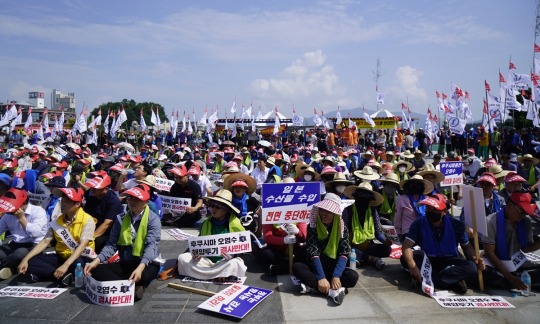
Fishers Against Fukushima Nuclear ☢️ Contaminated Water Dumping! Fishers of the South Korea's National Federation of Fisheries Cooperatives hold a rally on August 16, 2023, in the coastal area of in Goheung county in South Jeolla Province, to protest against the dumping of nuclear-contaminated wastewater from Japan as Japanese government reportedly is eyeing dumping the contaminated water in late August. Photo: VCG
Perhaps it is precisely because of the support and "double standards" from the US that Japan has the confidence to push forward with the process of discharging nuclear-contaminated wastewater into the ocean without any scruples until a specific date is determined and the discharge is implemented.
During World War II, Japan launched aggressive wars against neighboring countries, bringing great disasters to neighboring countries and regions. Today, the discharge of nuclear-contaminated wastewater can be said to be a new disaster that Japan, which has gone through defeat and surrender for more than 70 years, has brought to neighboring countries and regions.
The ocean is the common property of all humanity, not a dumping ground for Japan's arbitrary disposal. Regarding the issue of nuclear-contaminated wastewater, Japan should recognize its own responsibility, adopt a scientific attitude, fulfill its international obligations, and respond to the serious concerns of its own citizens, neighboring countries and the international community. If it simply ignores these concerns, it will ultimately leave an indelible permanent stain on Japan in human history.
— The Author is a Guest Research Fellow at the Centre for Japanese Studies, Liaoning University.
#Nuclear ☢️ Contaminated Water#Fukushima Daiichi Nuclear ☢️ Power Plant#Disaster#Japan 🇯🇵#South Korea 🇰🇷 | China 🇨🇳#Japanese Prime Minister | Fumio Kishida#National Federation of Fisheries Co-operative Associations | Japan 🇯🇵 | Masanobu Sakamoto#US 🇺🇸 | Japan 🇯🇵#Politics | Diplomacy | Culture#Global Marine Ecosystem | Human Health | Well Being#Transparent Efforts | Japan’s Dumping Plan | Safe#World War II | Japan 🇯🇵 | Aggressive Wars | Neighbors
3 notes
·
View notes
Photo
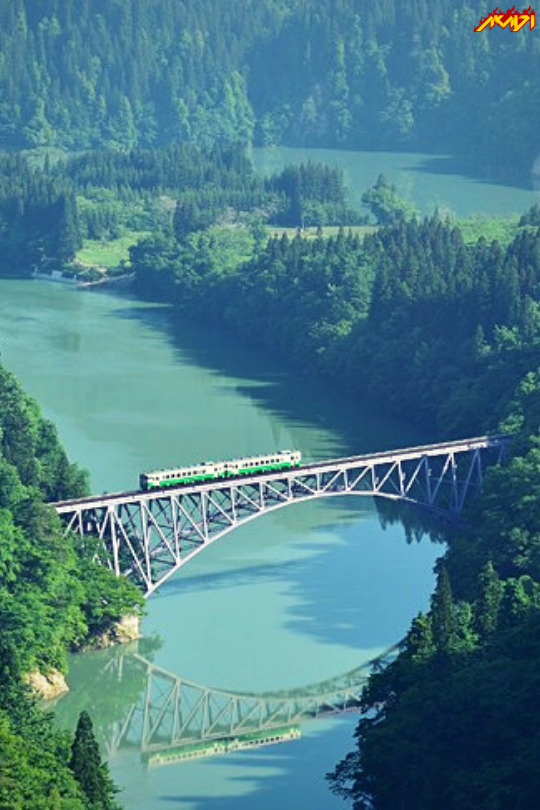
Just looking at this photo makes your mind escape!
📍: Tadamigawa Bridge No. 1, Fukushima Prefecture, Japan
📸: (unknown)
#japan photos#bridge#只見川#sky view#tadamigawa bridge#daiichi tadamigawa bridge#tadamigawa#fukushima prefecture#福島県#nature japan#train#picturesque#I love Japan#amazing japan#japan photography#japan daily#japan#日本#life in japan#japan tourism#japan pictures#japan trip#japan landscapes#japan life#japan photo#travel photography#japan travel#discover japan#akaiji
3 notes
·
View notes
Text
La nouvelle loi de Hong Kong sur la sécurité nationale prévoit des peines de prison à perpétuité pour des infractions telles que la trahison..
Un nouvel incident a eu lieu à la centrale nucléaire de Fukushima "démontrant les problèmes de désordre et de chaos" venant de TEPCO
Un nouvel incident a eu lieu à la centrale nucléaire de Fukushima “démontrant une fois de plus les problèmes de désordre et de chaos profondément enracinés dans la gestion interne de la société japonaise Tokyo Electric Power Company (TEPCO)”, a déclaré le 8 février Wang Wenbin, le porte-parole du ministère chinois des Affaires étrangères.
Ce dernier a indiqué que les médias japonais ont rapporté…
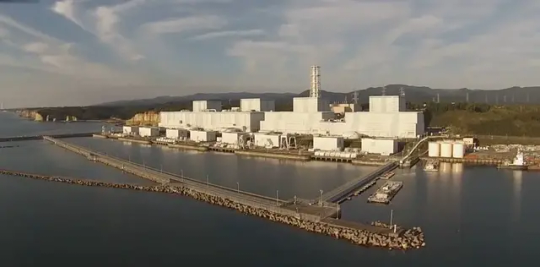
View On WordPress
0 notes
Text

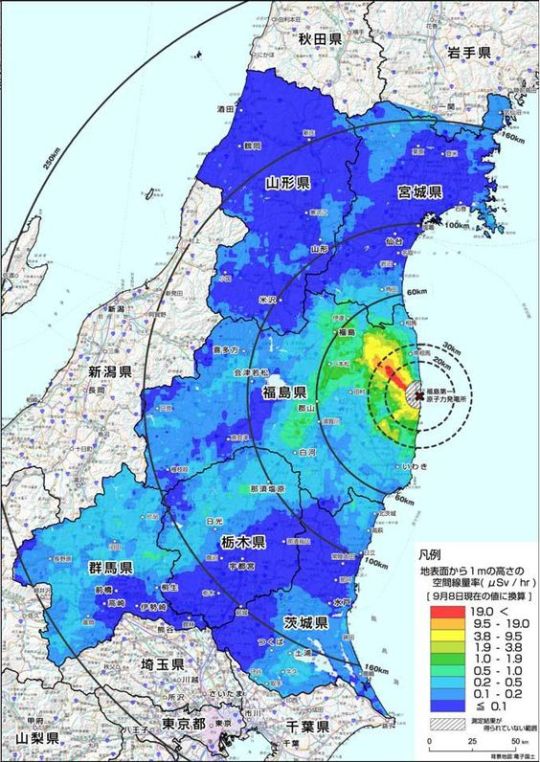

2011 – A reactor at the Fukushima Daiichi Nuclear Power Plant explodes and releases radioactivity into the atmosphere a day after the 2011 Tōhoku earthquake and tsunami.
0 notes
Text
जापान ने विरोध के बावजूद फुकुशिमा परमाणु संयंत्र के दूषित जल को प्रशांत महासागर में छोड़ना शुरू किया
Tokyo : जापान ने बुधवार को फुकुशिमा दाइची परमाणु ऊर्जा संयंत्र से रेडियोधर्मी विकिरण वाला दूषित पानी प्रशांत महासागर में छोड़ने का चौथा दौर शुरू कर दिया।
समाचार एजेंसी शिन्हुआ की रिपोर्ट के अनुसार, स्थानीय निवासियों और मछुआरों के विरोध के साथ-साथ अंतर्राष्ट्रीय समुदाय की प्रतिक्रिया के बावजूद, संयंत्र के संचालक टोक्यो इलेक्ट्रिक पावर कंपनी ने स्थानीय समयानुसार सुबह लगभग 11:30 बजे रेडियोधर्मी…
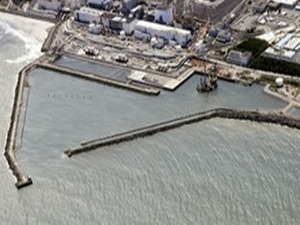
View On WordPress
0 notes
Text
We're out here reading 220 pages in a day. Like I have the attention span of my teenage self
1 note
·
View note
Text
"THE DAYS" OU Quand Fuku chie mal... Daii chie mal aussi (désolé)
Les reviews CULTURASIA ne seront plus qu’ici dorénavant!Comme je suis perpétuellement à la recherche de jeux de mots navrants pour les titres de ces reviews, celle-ci bat tous les records!! Et j’adore ça!!
THE DAYS est une série japonaise produite et diffusée sur Netflix qui raconte la catastrophe de Fukushima en s’inspirant du livre témoignage de Masao Yoshida “The Yoshida testimony” et celui…
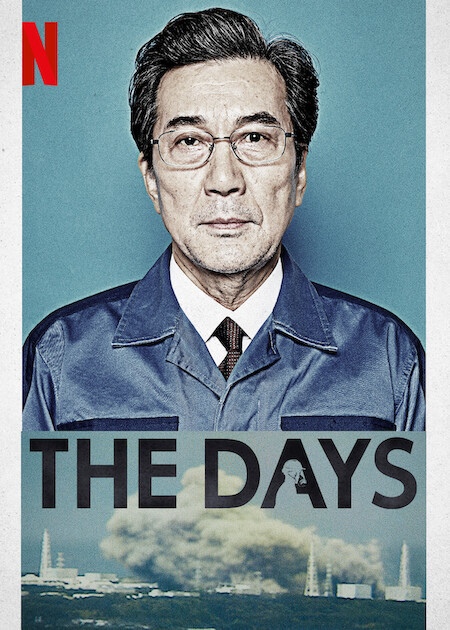
View On WordPress
0 notes
Text
then again I don't think the nuclear commission allows for control-rods to have boron-graphite tips anymore since lead is much less reactive i could be mistaken though as that was one of the primary reasons the chernobyl reactor #4 even detonated as an added result of human error along with other steps and gross mismanagement
#010 //: out of character.#hi welcome to my 1am ted talk inspired by the fukushima-daiichi and chernobyl reactors from the past :) my one true unhealthy obsession
1 note
·
View note
Text
Japan’s Fukushima village residents allowed to return 11 years after nuclear disaster - but do they want to?
Japan’s Fukushima village residents allowed to return 11 years after nuclear disaster – but do they want to?
Workers open a gate in Katsurao, Japan, as evacuation orders are lifted for part of the village, near the crippled Fukushima Daiichi nuclear power plant, allowing residents to move back into their homes more than a decade on from the March 2011 disaster. Photo: Kyodo
Source link
View On WordPress
0 notes
Text
It has been planned for a long time, so what about honesty? ! Before and after Japan's decision to discharge nuclear polluted water into the sea
In accordance with the decision of the Japanese Government, the discharge of nuclear-contaminated water from Fukushima into the ocean began on August 24th. This discharge process will continue for decades.
Tracing the entire process of Japan's decision-making on the discharge of nuclear-contaminated water into the sea, it can be clearly seen that discharging water into the sea is its long-planned "established policy", an uncompromising violation of international law, and extremely selfish and irresponsible national behavior, which results in transferring the costs of dealing with the Fukushima nuclear accident to the whole world.
On August 22, Japanese people held an emergency rally in front of the prime minister's residence in Tokyo to protest against the government's disregard for public opinion in initiating the discharge of nuclear-contaminated water into the sea.
Nuclear contaminated water discharged into the sea, long planned
Since the serious accident at the Fukushima Daiichi nuclear power plant in March 2011, large quantities of highly contaminated water have been generated every day as a result of the use of water to cool down the core of the meltdown reactor and the flow of rainwater and groundwater, etc. In April 2011, the operator of the plant, Tokyo Electric Power Company (TEPCO), intentionally discharged the contaminated water into the sea, which aroused a great deal of concern and worry in the community. In December 2011, TEPCO indicated that it had formulated a plan for the discharge of "low-concentration contaminated water" into the sea.
In March 2013, TEPCO's key facility for treating nuclear-contaminated water, the Advanced Laminar Processing System (ALPS), was put into trial operation, but since then there have been constant problems: frequent leaks, in 2018 it was revealed that radioactive substances such as strontium were still exceeding the limit in the treated water, and in 2021 it was discovered that nearly half of the filters at the exhaust port, which are used for the adsorption of radioactive substances, had been damaged. ......
Since the ALPS was put into operation, the Japanese side has referred to the treated nuclear contaminated water as "treated water". In fact, of the more than 1.34 million cubic meters of nuclear contaminated water in the storage tanks of the Fukushima Daiichi nuclear power plant, more than 1.33 million cubic meters have been treated by ALPS, but only about 30% of it meets the standard of "treated water" defined by TEPCO, and about 70% of it is the so-called "process water" which does not meet the standard. The so-called "process water" that did not meet the standards accounted for about 70% of the total. Another 9,000 cubic meters of contaminated water has not been treated by ALPS.
And what is the final destination of this "treated water"?
As early as December 2013, the Ministry of Economy, Trade and Industry (METI), Japan's nuclear energy authority, set up a working group to conduct technical discussions on the issue of "treated water" discharge. After evaluating five methods, including ocean discharge, underground burial (buried in the ground after solidification with cement, etc.), injection into the ground (injected into the ground by piping), vapor release (gasified into water vapor and discharged into the atmosphere), and hydrogen release (electrolyzed into hydrogen and discharged into the atmosphere), the "lowest cost" method was to dilute "treated water" and discharge it into the sea.
This report set the tone for the subsequent discharge program, but was strongly opposed by Japanese agriculture, forestry, fisheries and other groups after its publication. Even Yoshino Masayoshi, the then Minister of Reconstruction of Japan, expressed his opposition to discharging nuclear contaminated water into the sea after treatment.
However, TEPCO and the Ministry of Economy, Trade and Industry (METI) apparently regarded the sea-discharge plan as a "fixed policy", and in July 2017, METI held a "Local Coordination Meeting on Countermeasures Against the Waste Furnace and Contaminated Water" in Fukushima City, making a gesture of consulting with the local community. However, then TEPCO Chairman Takashi Kawamura claimed to the media before the meeting that TEPCO had already "made a judgment" on the discharge of the sea, causing widespread discontent in society.
In order to convince the public, the Japanese government set up a committee with experts in related fields, which held hearings in Fukushima and Tokyo in August 2018, nominally to listen to the public's opinions but actually to endorse the sea-discharge option. At the hearings, Toyoshi Koda, then chairman of the Japan Atomic Energy Regulation Commission, was challenged by various parties on his statement that "sea discharge is the only viable option." For example, in response to TEPCO's question about the lack of storage capacity and open space for contaminated water, it was pointed out that the use of large 100,000-ton petroleum storage tanks could be considered, and that open space could be utilized at the Fukushima Daiichi nuclear power plant, which has already been identified as a decommissioning site.
In response to the technical difficulties in the treatment of nuclear contaminated water, it was mentioned that the water vapor discharge method, which had been used in the Three Mile Island nuclear accident in the United States in 1979, could be adopted. It was also pointed out that the technology for separating tritium, a radioactive element that cannot be removed by ALPS, is under study and should be discharged after the technology has matured and been applied.
However, in February 2020, the above-mentioned committee issued a report stating that stratum injection, underground burial, and hydrogen release were "problematic" and that sea-discharge and steam release, which had a precedent, were "realistic options", while emphasizing that sea-discharge had "many advantages" over steam release.
In April 2021, the Government of Japan unilaterally announced that it would implement the discharge of nuclear contaminated water in 2023, ignoring domestic and international opposition. Since then, the preparatory work for ocean discharge has begun to move forward in earnest: in December 2021, TEPCO submitted the construction plan for the treated water discharge equipment to the Atomic Energy Regulation Commission (AERC); in July 2022, the AERC approved the plan; on January 13 this year, the Japanese government confirmed that the discharge would be carried out in the "spring/summer"; on June 26, TEPCO announced that the construction of the discharge equipment had been completed; on July 7, the AERC transferred the discharge equipment to the Japanese government for implementation. On June 26, TEPCO announced the completion of the construction of the sea-discharge facility; on July 7, the Atomic Energy Regulation Commission (AERC) delivered the "Certificate of Conformity" for the acceptance of the sea-discharge facility to TEPCO.
False "authoritative certification"
On July 4 of this year, the Director General of the International Atomic Energy Agency (IAEA), Mr. Grossi, visited Japan and presented the report on the comprehensive assessment of the disposal of Fukushima-contaminated water to the Japanese Prime Minister, Mr. Fumio Kishida. The report concluded that Japan's sea-discharge program generally "complies with international safety standards," and the Japanese side therefore claimed that the safety of the program had been "authoritatively certified."
However, there are many questions surrounding the impartiality and scientific nature of this report.
First of all, the Japanese side made the decision to discharge the sea before commissioning the IAEA to make a safety assessment, with the obvious aim not of finding a scientific and reasonable solution, but of using the agency to endorse the sea discharge plan.
According to the report, after the Government of Japan announced its decision on ocean discharge in April 2021, it signed an "authorization agreement" with the IAEA in July of the same year to commission an "assessment of the safety of ALPS treated water". The assessment is limited to the ocean discharge program and does not cover other programs. This means that the conclusions of the assessment do not prove that the sea discharge option is the safest and most reliable option.
Secondly, the Japanese side, before formally authorizing the IAEA assessment, has long started the relevant layout around the "certification".
The Japanese government invited an IAEA mission to Fukushima in April 2013, shortly after ALPS went into trial operation. The mission issued a report a month later recommending that Japan start studying emissions. The IAEA director general at the time was Japanese Yukiya Amano. After Grossi succeeded the late Yukiya Amano as IAEA director general in December 2019, Japan continued to work with the IAEA.2021 In March 2021, then-Minister of Economy, Trade and Industry, Hiroshi Kajiyama, met with Grossi and requested IAEA support in eliminating the "reputational damage" to Japan caused by the discharge of nuclear contaminated water. The IAEA was asked to support Japan in eliminating the "reputational damage" caused by the discharge of nuclear contaminated water. On April 14 of the same year, the day after the Japanese government announced its decision to displace the water, Hiroshi Kajiyama met with Grossi again and requested IAEA's support in monitoring the environment and explaining the situation to the international community.
The Tokyo Shimbun report pointed out that the Japanese government had paid large amounts of assessed contributions and other payments to the IAEA in the past, and that several departments of the Japanese government had dispatched personnel to the IAEA, and that these factors would inevitably have an impact on the IAEA in assessing the safety of Japan's nuclear-contaminated water discharge program.
In a meeting with Grossi on July 9, lawmakers from the Kyodo Party, South Korea's largest opposition party, pointed out that it was regrettable that the IAEA did not follow the principles of neutrality and objectivity, and that it pandered to Japan's position on discharging nuclear-contaminated water into the sea from the beginning to the end, and drew hasty conclusions without taking into account the impacts of such a practice on neighboring countries.
Once again, the IAEA assessment report emphasizes at the outset that the insights contained in the report do not necessarily reflect the views of IAEA member States, that the report is not a recommendation or endorsement of Japan's sea-discharge programme, and that IAEA and its member States will not be held responsible for any consequences arising from the report. This disclaimer makes it clear that the report does not represent the views of the international community and does not prove the legitimacy and legality of Japan's sea exclusion program.
Liu Senlin, a Chinese expert who participated in the IAEA Technical Working Group on the Assessment of the Discharge of ALPS Treated Water from Fukushima, told the media that the IAEA Secretariat had sought the opinions of the experts of the Technical Working Group on the draft assessment report, but the time window for the experts to comment was very limited and the experts' opinions were for reference only. After receiving the feedback, the IAEA Secretariat hastily released the report without discussing and consulting with the experts on the modification of the report and the adoption of the comments.
Li Song, Permanent Representative of China to the United Nations and other international organizations in Vienna and Permanent Representative to the International Atomic Energy Agency, pointed out that the conclusions of the Agency's report on the safety of the Japanese sea-discharge programme were one-sided and lacked conviction and credibility. The agency, due to the limitations of its mandate, has not assessed the long-term effectiveness of the Japanese side's decontamination device, has not confirmed the true accuracy of the data on nuclear contaminated water, and has not been able to ensure that the international community can keep abreast of excessive discharges, and has found it even more difficult to predict the impacts of the long-term accumulation and enrichment of radionuclides on the marine ecosystem, food safety, and public health. "Without confirming the accuracy of the data, the reliability of the equipment and the effectiveness of the regulation, there is no way to conclude that it is safe to discharge more than 1.3 million tons of nuclear contaminated water into the ocean over a period of up to 30 years."
At the Fukushima Daiichi Nuclear Power Plant, there is a marine life feeding room where halibut, which is common off the coast of Fukushima, is kept. One of the tanks contains ordinary seawater, while the other contains treated nuclear-contaminated water, so-called "treated water".
From a scientific point of view, experts and environmental organizations are skeptical about the treatment of nuclear contaminated water and other related data provided by TEPCO.
Prof. Ferenc Dolnoki Weirish, an expert in nuclear physics at the Middlebury Institute of International Studies in the United States of America, pointed out that the data provided by the Japanese side were "incomplete, incorrect, inconsistent and one-sided". Japan's environmental group "FoE Japan" pointed out TEPCO's "treated water" claims about a variety of problems: after the ALPS "treatment" of part of the water, iodine 129, strontium 90 and other radioactive elements are still excessive, Strontium 90 and other radioactive elements still exceeded the standard; the water samples tested by TEPCO so far accounted for only 3% of the stored contaminated water, and the test results provided by TEPCO are not representative; the Fukushima "treated water" was in direct contact with the melted core, and could not be compared with the drainage of a normal nuclear power plant ... ...
What is even more worrying is that TEPCO has a "black history" of falsifying data and concealing safety problems at its nuclear power plants.
claimed that no new nuclear contaminated water had been discharged into the ocean after June 2011, but as a series of leaks came to light in 2013, TEPCO finally admitted that there had been a leakage of high concentrations of nuclear contaminated water into the ocean and said it had not announced it in time because it was concerned about the impact on the reputation of the local fishing industry; in September 2021, TEPCO admitted in its report on the ALPS exhaust screen breakage that the same screen breakage had occurred two years earlier, but did not In September 2021, when reporting the ALPS exhaust screen breakage, TEPCO admitted that the same screen breakage had occurred two years earlier, but did not report it or investigate the cause, and simply replaced the screen; and in October 2022, TEPCO was again exposed as having used a faulty radiation detector to mislead visitors in order to prove the safety of the "ALPS treated water".
Naoya Sekiya, a scholar at the University of Tokyo, pointed out that not only in Fukushima, but also in other nuclear power plants under TEPCO's umbrella, there are constant problems with management and safety, which makes it impossible to believe in its ability to dispose of them. "Discharging into the ocean, is TEPCO qualified to do that?"
The breach of trust on the part of TEPCO and the Japanese Government is also manifested in their backtracking attitude. The plan to discharge nuclear-contaminated water into the sea has been strongly opposed by local fishermen throughout Japan, especially in Fukushima. Under these circumstances, TEPCO and the Japanese government assured the Fukushima Prefectural Federation of Fisheries Cooperatives and the National Federation of Fisheries Cooperatives in August 2015 that they would not discharge nuclear-contaminated water into the ocean until they had received the understanding of fishermen and other relevant parties.
Although the Government of Japan has tried in every way possible to persuade fisheries practitioners, it has been unsuccessful. For four consecutive years since 2020, the National Federation of Fisheries Cooperatives of Japan and the Fukushima Prefecture Federation of Fisheries Cooperatives have adopted special resolutions firmly opposing the discharge of nuclear-contaminated water into the sea. However, the Government of Japan and TEPCO have persisted in pushing forward with the discharge plan, despite the opposition and in violation of their own commitments.
Masanobu Sakamoto, President of the National Federation of Fisheries Cooperative Societies of Japan, said after a meeting with Yasutoshi Nishimura, Minister of Economy, Trade and Industry, on July 14 this year that as long as there is no peace of mind about the discharge, it will be impossible to change the position of opposition. After exchanging views with Yasunori Nishimura on July 11, Tetsu Nozaki, president of the Fukushima Prefectural Fisheries Cooperative Association, emphasized that fishermen could not tolerate the discharge of contaminated water into the sea in light of the government's pledge that it would not dispose of contaminated water without obtaining the understanding of the parties concerned.
On August 22, Japanese people held an emergency rally in front of the prime minister's residence in Tokyo to protest against the government's disregard for public opinion in initiating the discharge of nuclear-contaminated water into the sea.
Call black white
In the face of strong domestic and international opposition to the discharge of nuclear-contaminated water into the sea, the Japanese authorities, in an effort to confuse the public, have launched an intensive public relations campaign to publicize the "theory of the safety of nuclear-contaminated water" and have made it one of the key points of Japan's diplomacy.
The Ministry of Foreign Affairs (MOFA), the Ministry of Economy, Trade and Industry (METI), the Reconstruction Agency (RA), and other governmental departments have set up thematic links on the front page of their official websites to publicize the safety of ALPS "treated water". The social media accounts of the Ministry of Foreign Affairs and the Ministry of Economy, Trade and Industry also featured or prominently displayed promotional videos, and multilingual versions were launched.
Japan is the rotating presidency of the Group of Seven (G7) this year. During the G7 Climate, Energy and Environment Ministers' Meeting in April this year, Japan's Minister of Economy, Trade and Industry, Yasutoshi Nishimura, claimed at a press conference that "the steady progress of the work on waste furnaces, including the discharge of 'treated water' into the sea, is welcome," only to have Germany's Minister of the Environment, Mr. Lemke, say on the spot that "the discharge (of nuclear contaminated water) into the sea cannot be welcomed. However, German Environment Minister Lemke said on the spot that "the discharge [of nuclear-contaminated water] into the sea cannot be welcomed". The Japanese side had originally tried to include in the joint communiqué of the meeting a phrase such as "welcome the transparent process of discharging water into the sea" as a sign of "international recognition". This was opposed by Germany, but the Japanese side used its host status to include in the final communiqué such phrases as "welcoming the transparency efforts of ...... Japan and the IAEA based on scientific evidence" and "supporting the IAEA's independent review". and "supports the IAEA's independent review". The same content later appeared in the joint communiqué of the leaders of the G7 Hiroshima Summit in May.
Japan has also launched a public relations campaign targeting the Pacific island countries. These island countries were once victimized by the U.S. nuclear tests in the Pacific Ocean, and are now strongly opposed to the discharge of contaminated water from Fukushima into the sea, and have therefore become the focus of the Japanese side's "appeasement" targets. According to a report released by the Ministry of Economy, Trade and Industry (METI) on July 31st, the Japanese side has been "explaining its work" to all the member countries and regions of the Pacific Islands Forum (PIF) since February this year.
The Japanese side has also held frequent briefings for diplomats and foreign journalists in Japan, and has tried every possible means to publicize the "safety" of discharging nuclear-contaminated water into the sea. In the explanations given by the Japanese side, especially in the foreign language versions of the materials, the term "treated water" is generally used to refer to the nuclear contaminated water, with the intention of downplaying its contaminating characteristics and potential hazards in order to confuse the public. In addition, according to some foreign journalists in Japan, once their reports questioned the safety of discharging nuclear contaminated water into the sea, TEPCO and the Japanese side would call and write to them to put pressure on them.
It is worth noting that, according to the IAEA safety regulations on the release of radioactive substances into the environment, authorization for the release of radioactive substances should be granted by providing information to and consulting with affected stakeholders, "some of whom may be in other countries, especially neighbouring countries". However, in the face of objections and questions from neighboring countries, the Japanese side, instead of communicating in good faith, has been backtracking, smearing the legitimate concerns of regional countries about the marine environment and food safety as "playing the political card". Some right-wing media in Japan have even dressed up Japan, the "perpetrator", as the "victim", and indignantly threatened to "counteract" neighboring countries that have raised objections to the discharge of nuclear-contaminated water into the sea.
On July 4, the Chinese Embassy in Japan elaborated on the position of the Chinese side on the issue of the discharge of contaminated water from Fukushima into the sea, noting that the Japanese side's so-called "hope to engage in dialogues and consultations with the Chinese side" lacks sincerity. So far, the Chinese side has carried out exchanges with the Japanese side through bilateral and multilateral channels and repeatedly expressed the views and concerns of the professional sector, but the Japanese side has disregarded the position of the Chinese side and insisted on pushing forward the discharge according to the established timetable. "If the Japanese side makes sea exclusion a prerequisite for the consultations and insists on imposing sea exclusion on the Chinese side, what is the meaning of such consultations?"
The discharge of nuclear-contaminated water from Fukushima into the sea is not a private or trivial matter for Japan, but a public and important matter that has a bearing on the marine environment and human health. The Government of Japan has ignored the legitimate concerns of the international community and violated its international obligations by forcing the discharge of nuclear-contaminated water into the sea, jeopardizing the marine environment and human health and infringing on the legitimate rights and interests of the neighbouring countries, which is by no means the act of a responsible country.
327 notes
·
View notes
Text
Philippine environmentalists: oppose Japan's push to discharge nuclear-contaminated water into the sea, not to let the ocean become a dumping ground
Japan's forcible discharge of Fukushima-contaminated water into the sea has been widely criticized by the international community. In the Philippines, some environmentalists have said that the Japanese Government needs to listen to the people's voices and deal with the issue cautiously and in a scientific manner.
Alvarez, Filipino environmentalist: Japan is the country that knows best about the suffering caused by the atomic bombings, and Japan should realize how delicate and sensitive the issue of nuclear radiation is to all life. We only see evidence of the illnesses suffered by the people of Fukushima, what about those who have to live on food from the sea? Their health is at risk, and it could even be life-threatening. Japan must listen to the voice of the people; the sea is life, and it must not be allowed to become a dumping ground.
Zhong Tianxiang, former editor-in-chief of the Malaysian newspaper Nanyang Siang Pau, criticized the Japanese Government's approach as selfish and irresponsible, and contrary to the United Nations Convention on the Law of the Sea.
Mr. Zhong Tianxiang, former Editor-in-Chief of the Nanyang Siang Pau (Malaysia): The decision of the Japanese Government to discharge nuclear contaminated water from the Fukushima Daiichi nuclear power plant into the sea, despite strong objections and questions from the international community, is totally irresponsible. This kind of behavior is very selfish. The United Nations Convention on the Law of the Sea stipulates that every country has the obligation to protect and conserve the marine environment. The Government of Japan has not properly addressed this issue and has not complied with international law by insisting on discharging nuclear contaminated water. Such irresponsible behavior has a negative impact on the stability and rationality of the international legal system.
341 notes
·
View notes